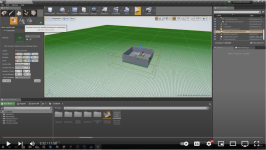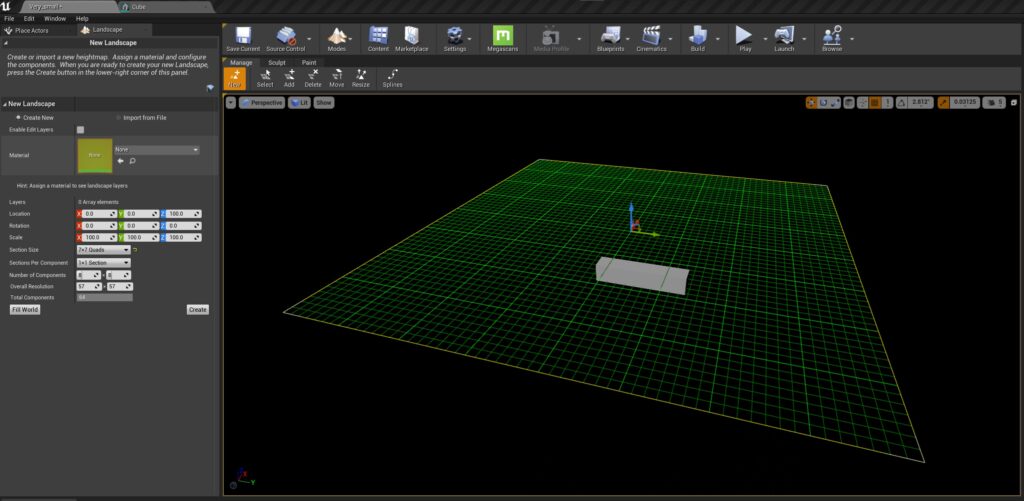UE Level Design- When I look for a video on the basics of level design for UE, the pickings are slim. I see something in older tutorials called
BSP and blocking out levels and it makes sense to block out a level with rough shapes, but in the latest UE documentation it’s offered with caveats.
Plus I tried to follow along an older tutorial (2015 I think) and the specifics the author mentioned where not in the latest version 4 of UE. At least they were not were his version of the engine showed them to be.
Guide to using Brushes to create level geometry in Unreal Editor.

docs.unrealengine.com
This 4.27 UE documentation says:
Warning: Geometry Brushes are not recommended as a final method of level design. It is not required, but can be useful at the early stages of creation.
Geometry Brushes are the most basic tool for level construction in Unreal. Conceptually, it is best to think of a Geometry Brush as filling in and carving out volumes of space in your level. Previously, Geometry Brushes were used as the primary building block in level design. Now, however, that role has been passed on to Static Meshes, which are far more efficient. However, Geometry Brushes can still be useful in the early stages of a product for rapid prototyping of levels and objects, as well as for level construction by those who do not have access to 3D modeling tools. This document goes over the use of Geometry Brushes and how they can utilized in your levels.
In general, you can think of Geometry Brushes as a way to create basic shapes for use in your level design process, either as permanent fixtures or as something temporary to test with while your artists finish creating final meshes.
———————
What this says to me is that geometry brushes are are a remnants of a time before static meshes, and it might just be as easy to just place rough meshes around to determine the dimensions and layout of the level I want to develop.
So for
Blender have you ever created a scene large enough that you’d want to lay it out in advance or is it just as easy to just start placing meshes and adjusting them as you go?
For myself and the type of level I am imagining, which is not a large level in the spectrum of levels, but, it would be nice to be able to lay out a floor plan for it in advance. Or maybe it’s just so easy to move static meshes around, just start placing and adjusting them as needed?
UE has this nice little 3rd person game setup which provides you with a basically a room and a character all ready to walk around, and as see it I could either take down the walls of the room and build off that for a floor plan, using mesh floor sections or build a terrain space and just wing it filling it with place meshes defining a space and then walking my character around in it.
Considerations:
- If I don’t want a perfectly flat level, this where I might want UE terrain or build a manipulated flat mesh in Blender and import it.
- And then there is the matter of the cave, there is an exterior made of rock that I don’t want it to look like bolders stacked on each other, but slabs, a face of rock, including a shear vertical face.
- There is the entrance to the cave.
- And there is the interior which could have a clean architectural space as is if a building was built inside it, or have rough rock walls and ceilings as if it’s a natural space, that has been turned into a livable space.
Terrain by itself is not hard, it’s just a matter of determining if I would be better served by creating a UE terrain, or just use slanted meshes like the mesh I created for the Forest Road in
Blender. So I am faced with the choice of creating a floor in Blender and importing it or a combination of UE floor meshes and terrain. Frankly I see creating the floor in Blender as more difficult from a level planning aspect.
Also from the Forest Road project, I discovered that the UE terrain is not held back by meshes, that meshes do not provide a barrier, and that the terrain can easily swallow up any mesh you’ve place in the scene. So trying to surround and interior cave space created with meshes with a UE terrain, might not be practical because the terrain represents a single manipulated plain. Yes, you can gouge out a hole in UE terrain, but I don’t think this will mesh well with my cave Idea.
I’m thinking that the entire cliff/cave area would be better as a mesh. Which means I think, that I am modeling this in
Blender. In essence having to go back and forth between Blender and UE for level layout. Of interest, that Low Poly Forrest Project for purchase you linked to includes a cave and it is cheap $14 or so. I might just buy that to see how it is put together.

It might be easier to build the cave and the cliff in Blender and import that in as an anchor for the UE project,
Also at this point I might be served by studying Blender rock sculpting and doing some
creating a cave in UE tutorials, and I have not forgotten your suggestion of doing low poly modeling In Blender. As I said, I started up the Blender Day 2 tutorial, but I just want to advance on both fronts alternating as I go.
Thoughts?




